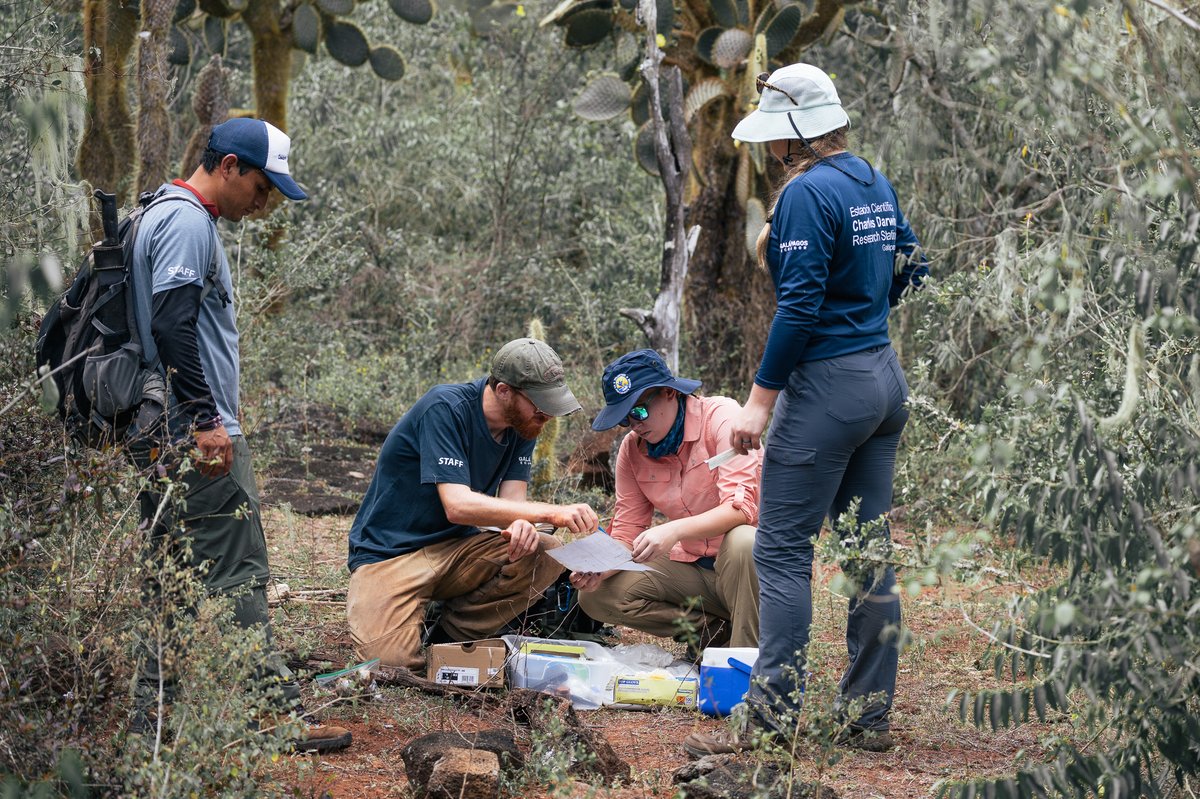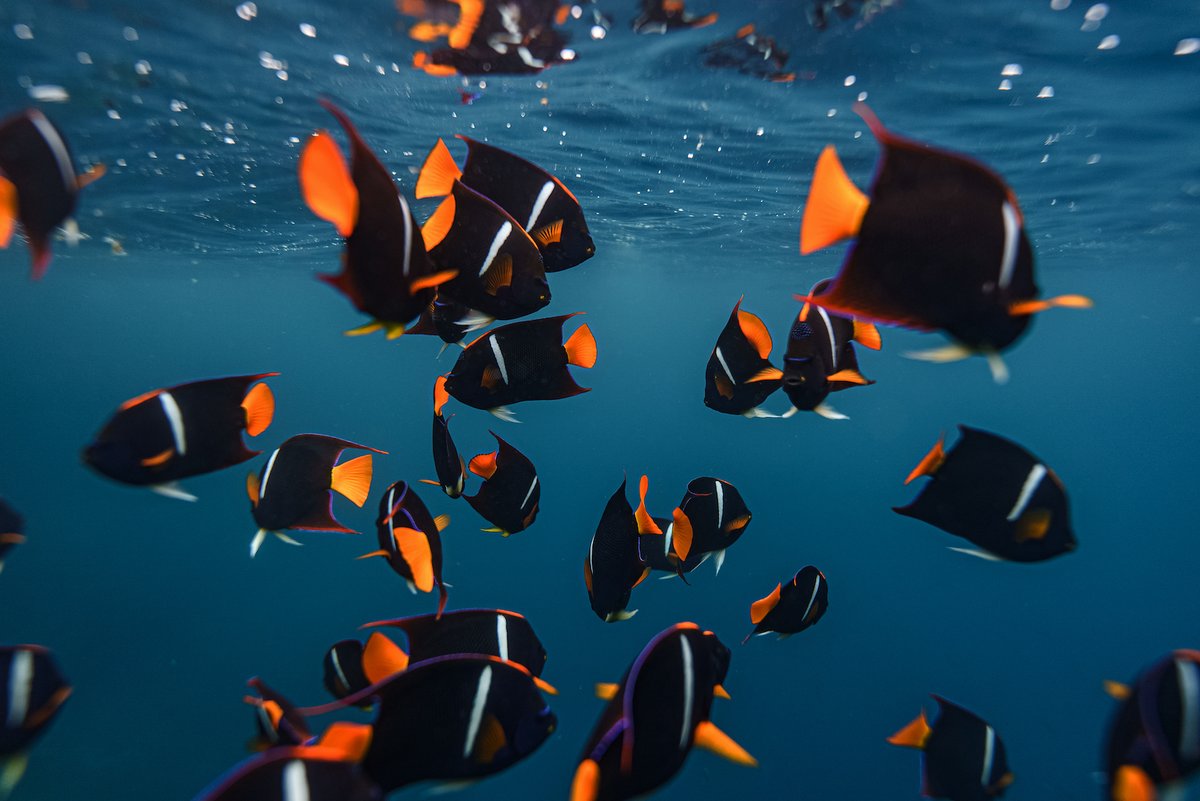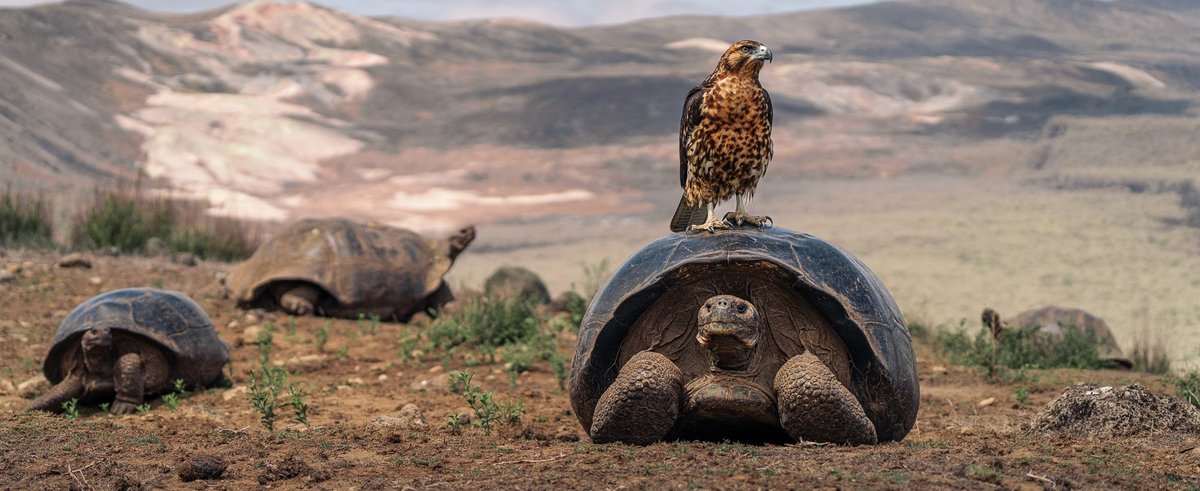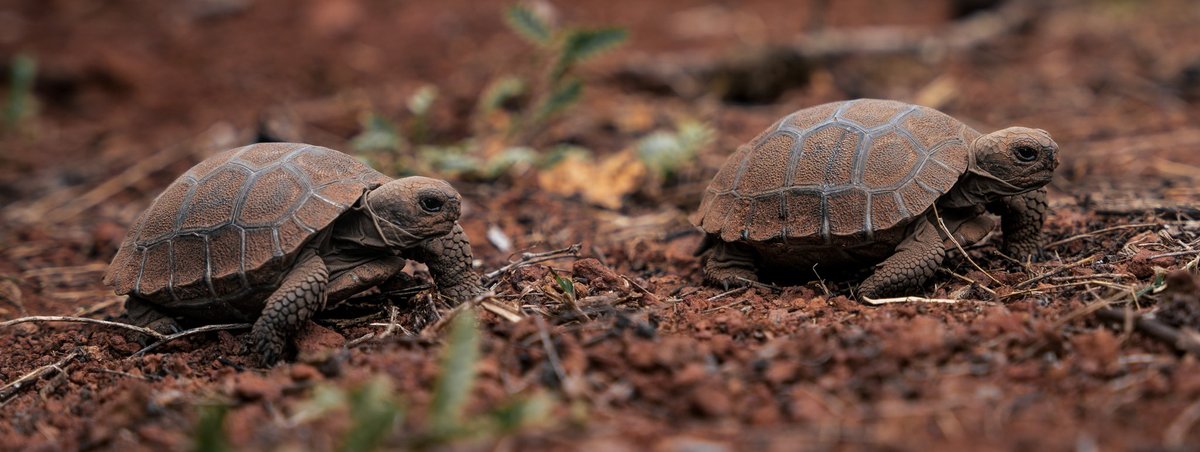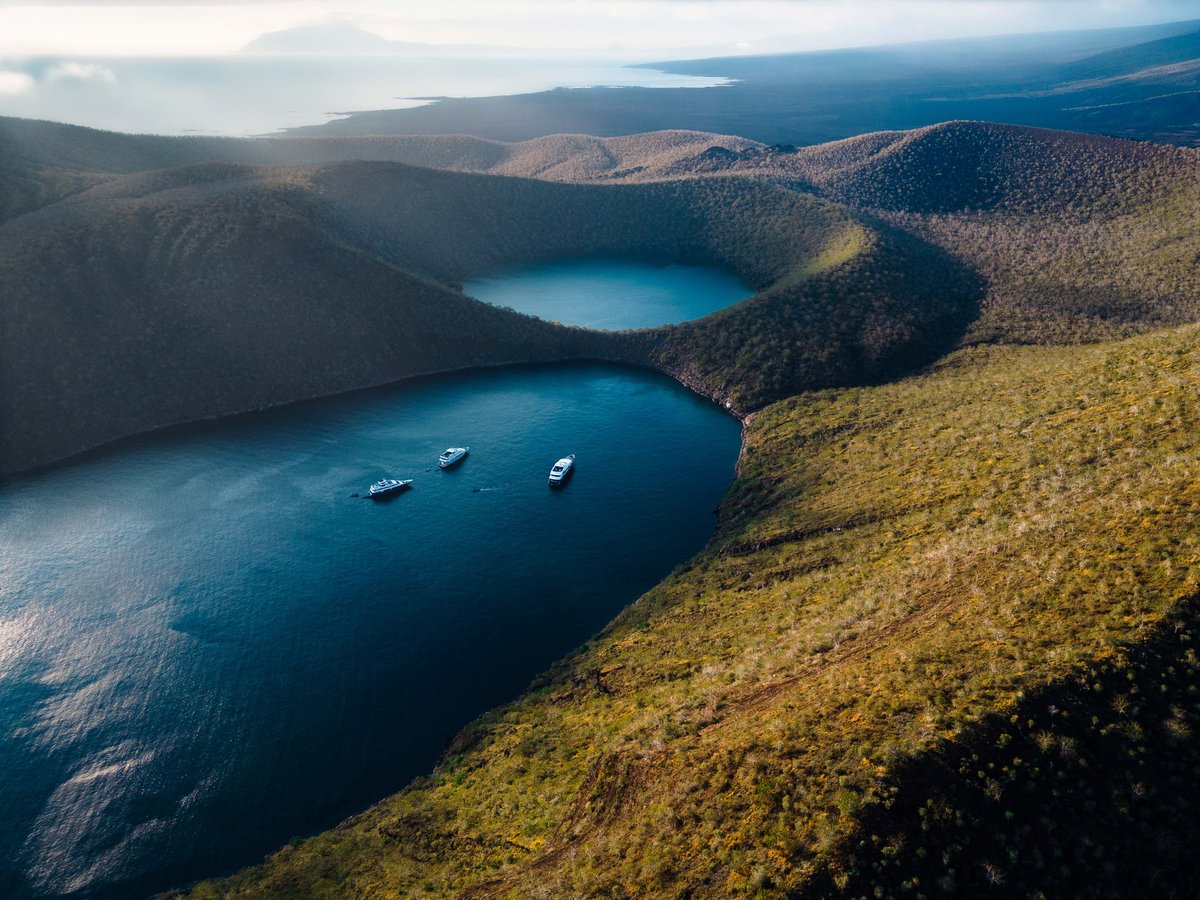The story behind the re-encounter with Scalesia retroflexa at El Garrapatero
It all began with a weekend visit to El Garrapatero Beach, on Santa Cruz Island. My friend Rebekka and I were kayaking along the coast when we made an unexpected discovery, one that could change the fate of a critically endangered plant species.
There, clinging to a rocky cliff, was a shrub with wavy leaves and small white flowers.
Could it be Scalesia retroflexa, one of the rarest plants in the Galápagos?
Scalesia retroflexa belongs to the genus Scalesia, one of the six plant genera endemic to the Galapagos. This group of 15 plant species is known as “Darwin’s finches of the plant world” due to the great adaptive radiation resulting from their presence in different environments and islands. Some of these species have very restricted distributions. For example, Scalesia retroflexa is found only in the southeast of Santa Cruz Island, where its population has decreased due to browsing by introduced goats.
This species is considered so rare because, since the early 2000s, it has only been documented as “present” within a single population at Punta Núñez. However, historical herbarium records suggest that in the past it also grew in other locations along the southeastern coast of Santa Cruz. The Galápagos Verde 2050 (GV2050) program of the Charles Darwin Foundation (CDF), the ecological restoration initiative I have worked with for nearly 5 years, has been planning a search along this coastal area to confirm whether any of the historical populations still persist. To do this, we have compiled coordinates of sites where the species was present in the past, based on scientific literature and herbarium records.
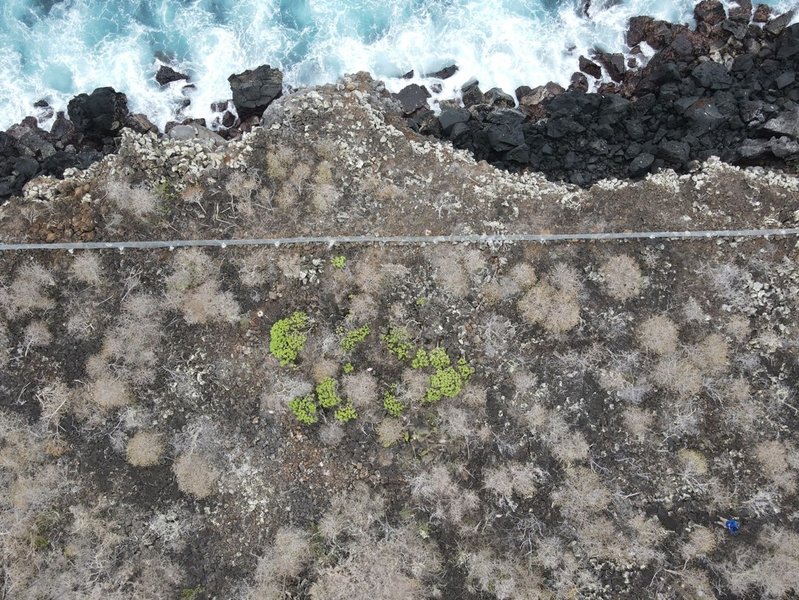
Unfortunately, the lack of funding has prevented us from carrying out the search for new populations.
That day at El Garrapatero, we were not looking for Scalesia retroflexa. We were simply enjoying the beach when I remembered something from our literature review: a 1995 thesis mentioned the presence of these plants just five meters from the water, near this area. If they still existed, would it be possible to see them from the area where kayaking is allowed?
We paddled along the coast, my eyes scanning the rocks. And then, we saw it. Not just one, but several plants growing on the cliffs. Could it be real? How many times had I, my team, and other people with botanical training kayaked along this coast over the last 30 years without noticing the presence of these critically endangered plants?
We needed to be sure. Very carefully, we approached the plant closest to the water. Then, a sweet, familiar scent confirmed what my eyes already knew thanks to previous experience with this species: it was undoubtedly Scalesia retroflexa!
Back at the CDF, I shared the exciting news with the GV2050 team. We immediately organized an expedition with support from the Galapagos National Park Directorate. With the proper field travel permit, I returned with my colleagues Paúl Mayorga, whose knowledge of fieldwork is invaluable, and Elena Espín, a GV2050 volunteer on her first visit to the islands, along with a machete to access the site on foot and explore more thoroughly.
To our surprise, in a stretch of approximately 50 meters along the coast we found 16 individuals of this species, giving us hope that more plants may exist in other historical sites still unexplored. We also collected herbarium samples, which were examined by Patricia Jaramillo Díaz, Principal Investigator of GV2050, to confirm the species.
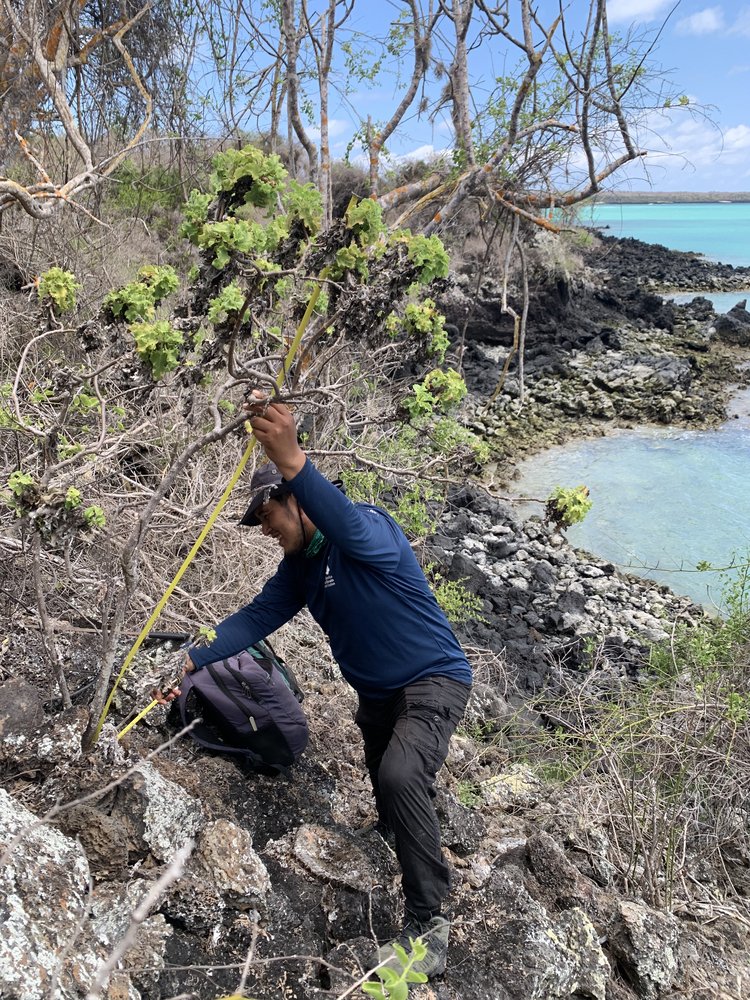
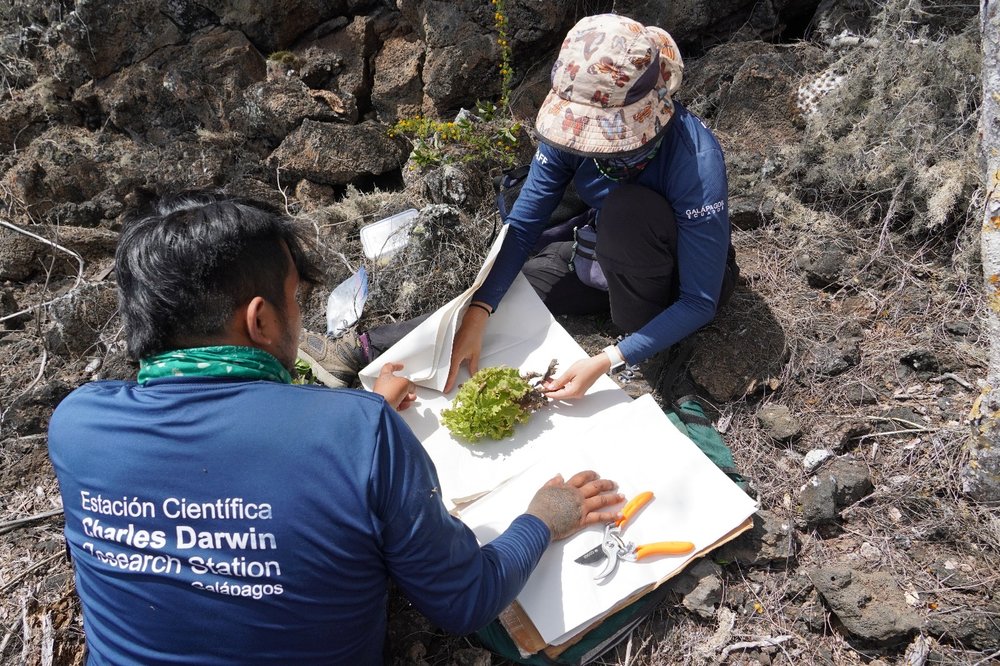
The discovery of this second population represents a unique opportunity to strengthen conservation efforts for Scalesia retroflexa. Now that we have confirmed more individuals, we can assess their vulnerability to threats such as goat herbivory and use them as a second seed source for restoration efforts. We are currently working on strategies to protect this new population and give Scalesia retroflexa a future beyond extinction.
Scientific discoveries do not always occur in remote and unexplored places. Sometimes, they happen on the same beach where you spend your weekends. Nor are they always made by “traditional scientists.” They can come from anyone who is curious, observant, and willing to ask questions.
If you have the privilege of calling the Galápagos your home, you already have more knowledge than you might think. Park rangers, tour guides, fishers… local knowledge is everywhere, passed on among families and friends. And knowledge can also be acquired. The most important thing you need is curiosity.
So next time you explore, pay attention. Ask questions. Observe the plants and animals around you closely. Because the next great discovery could be right in front of your eyes.
